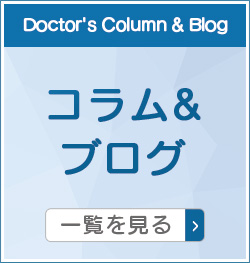昨年の3月にウィーンで開催された第1回の線維筋痛症の国際学会に参加してきましたが、残念なことに日本人医師は私一人でした。第2回の今年は、Covid-19パンデミックのため延期に加えてバーチャルでの開催となりました。
この演題では、線維筋痛症に対するオピオイド治療の可能性について述べています。たしかに、線維筋痛症に対する特異的な治療法はありません。
しかも、線維筋痛症に対する様々な病因性仮説の中で、エンドカンナビノイド系とオピオイド系の変質が重要な役割を果たしている線維筋痛症に対する強力なオピオイドによる治療は、効果がないだけでなく、例えば疼痛過敏症候群のような多くの有害事象が発生するため、大多数の症例で失敗に終わることが証明されています。
線維筋痛症に対する強力なオピオイドによる治療は、効果がないだけでなく、例えば疼痛過敏症候群のような多くの有害事象が発生するため、大多数の症例で失敗に終わることが証明されています。
ただし、その一方で、カンナビス・サティバの線維筋痛症に対する効果については、有効成分(テトラヒドロカンナビノールとカンナビジオール)の濃度や投与方法によっては、慢性疼痛、睡眠、硬直、胃腸障害、一般的な健康への効果があることが実証されているということを発表しています。
Opioids (including opioid antagonists) and Cannabinoids for Fibromyalgia and Chronic Pain – Is there any role?
Jacob Ablin
Tel-Aviv Sourasky Medical Center, Israel
Show Summary
1Laura Bazzichi, 1Arianna Consensi, 1Camillo Giacomelli, 2Piercarlo Sarzi Puttini
1U.O. of Rheumatology, Pisa A.O.U.P, Pisa, Italy
2U.O. of Rheumatology, L. Sacco University Hospital, Milan, Italy
Fibromyalgia is a syndrome characterized by widespread pain, fatigue, sleep disturbances and a constellation of dysfunctional symptoms, which lead to poor quality of life and negative consequences for patients’ family and work life. People affected by fibromyalgia have no specific changes in blood and instrumental tests and there is no specific therapy for the disease. Patients easily develop adverse effects to drug therapies, hardly withstand physical therapies and even psychological therapies are not always readily available and specific.
Fibromyalgia syndrome appears to be a chronic disturbance characterized by central sensitization, whose typical clinical manifestations are hyperalgesia and allodynia, also associated with chronic peripheral stimuli. Among the various etiopathogenetic hypotheses formulated for fibromyalgia, alterations of the endocannabinoid and opioid systems probably play an important role. Both of these systems are activated primarily in conditions of cellular stress and in response to pain; they are interactive and changes in one of the two systems induce negative or positive feedback mechanisms in the other. Indeed, there is growing evidence on the positive effects of Cannabis Sativa for fibromyalgia, with effects on chronic pain, sleep, rigidity, gastrointestinal disorders and general well-being depending on different concentrations of its active ingredients (tetrahydrocannabinol and cannabidiol) and on the way of administration. On the contrary, treatment with strong opioids in fibromyalgia has proven to be a failure in the majority of cases, because of not only ineffectiveness, but also many adverse events, as for example the hyperalgic syndrome. Therefore, the use of opioids antagonists such as naltrexone may be promising. If used at low doses (1 to 5 mg), naltrexone has a neuroprotective effect, since it acts as a glial modulator, inhibiting microglial activation. Furthermore, it elicits the so-called rebound effect of the opioids, since a transitory block of the opioid receptor increases opioid endogenous production.
線維筋痛症と慢性疼痛に対するオピオイド(オピオイド拮抗薬を含む)とカンナビノイド-役割はあるのか?
ジェイコブ・アブリン
テルアビブ・スラスキー医療センター、イスラエル
1Laura Bazzichi、1Arianna Consensi、1Camillo Giacomelli、2Piercarlo Sarzi Puttini
1イタリア、ピサA.O.U.P.リウマチ科
2イタリア、ミラノ、L.サッコ大学病院リウマチ科
線維筋痛症は、広範囲に及ぶ痛み、疲労、睡眠障害、機能不全症状が特徴的な症候群であり、患者の家族や職場生活に悪影響を及ぼし、生活の質を低下させる。線維筋痛症に罹患した人は、血液検査や器質検査で特異的な変化がなく、この病気に対する特異的な治療法はない。患者は容易に薬物療法への副作用を開発し、物理療法にはほとんど耐えられず、心理療法であっても、常に容易に利用可能で具体的なものではない。
線維筋痛症症候群は、その典型的な臨床症状は、また、慢性的な末梢刺激に関連付けられている痛覚過敏とアロディニアという中枢感作によって特徴づけられる慢性的な障害であるように見える。
線維筋痛症に対する様々な病因性仮説の中で、エンドカンナビノイド系とオピオイド系の変質が重要な役割を果たしていると考えられる。これらのシステムはともに、主に細胞ストレスや痛みに反応して活性化される;それらは相互に作用しており、2つのシステムの一方の変化が他方のシステムに負または正のフィードバック機構を誘導する。
実際、カンナビス・サティバの線維筋痛症に対する効果については、有効成分(テトラヒドロカンナビノールとカンナビジオール)の濃度や投与方法によっては、慢性疼痛、睡眠、硬直、胃腸障害、一般的な健康への効果があることが実証されている。
逆に、線維筋痛症に対する強力なオピオイドによる治療は、効果がないだけでなく、例えば疼痛過敏症候群のような多くの有害事象が発生するため、大多数の症例で失敗に終わることが証明されている。
したがって、ナルトレキソンのようなオピオイド拮抗薬の使用は有望かもしれない。低用量(1~5mg)で使用される場合、ナルトレキソンはグリア神経細胞モジュレーターとして作用し、ミクログリアの活性化を阻害するため、神経保護効果がある。
さらに、オピオイド受容体の一過性のブロックがオピオイドの内因性産生を増加させるため、いわゆるオピオイドのリバウンド効果を誘発する。
1)Sarzi-Puttini P et al :Medical cannabis and cannabinoids in rheumatology: where are we now?.Expert Rev Clin Immunol. 2019 Oct; 15(10):1019-1032
2)Arnold LM et al. AAPT Diagnostic Criteria for Fibromyalgia.J Pain. 2019 Jun;20(6):611-628. Review.
3)Ngian GS et Al.The use of opioids in fibromyalgia. Int J Rheum Dis. 2011 Feb;14(1):6-11. Review.
4)Patten DK et Al: The Safety and Efficacy of Low-Dose Naltrexone in the Management of Chronic Pain and Inflammation in Multiple Sclerosis, Fibromyalgia, Crohn’s Disease, and Other Chronic Pain Disorders. Pharmacotherapy. 2018 Mar;38(3):382-389.
16:25-16:45
Is there Room for Cannabis Treatment in Rheumatic Conditions
Howard Amital
Sheba Medical Center, Israel
Show Summary
Howard Amital MD MHA
Department of Medicine ‘B’, Zabludowicz Center for Autoimmune Diseases, Sheba Medical Center, Tel-Hashomer, Ramat-Gan, Israel
During the last century, the history of cannabis has been rewritten several times; the once commonly used natural remedy had been criminalized, faded into oblivion, resurrected and undergone a recent interesting process of medicalization.
In several countries, Health ministries legislated paths for legal permits for the use of cannabis to many patients, primarily to patients suffering from continuous and troublesome pain.
Recent retrospective analyses had marked an impressive effect of cannabis extracts used either by smoking, inhalation or sublingually on many functional, mental and pain parameters. These interesting results are even more challenging given the borderline outcomes of the current medical agents that had been approved by the FDA and EMEA. Of course the need for properly designed prospective studies are in need; it seems that such studies are pending and will contribute to the harnessing of cannabis for medical use.
リウマチの状態で大麻治療のための余地はありますか?
ハワード・アミタール
イスラエル、シェバ医療センター
概要を表示する
ハワードAmital MD MHA
イスラエル ラマトガン市 テルハショマー シェバ医療センター自己免疫疾患センターB内科
前世紀の間に、大麻の歴史は何度も書き換えられてきた。かつて一般的に使用されていた自然療法は、犯罪化され、忘却の彼方へと消えていき、復活し、医療化という最近の興味深いプロセスを経てきた。
いくつかの国では、保健省は、主に継続的で厄介な痛みに苦しんでいる患者に、多くの患者に大麻の使用のための法的な許可のための道を立法化した。
最近のレトロスペクティブな分析では、喫煙、吸入、または亜言語のいずれかで使用される大麻抽出物の印象的な効果をマークしていた多くの機能的、精神的、および痛みのパラメータに。これらの興味深い結果は、FDAとEMEAによって承認されている現在の医療用医薬品のボーダーラインの結果を考えると、さらに困難なものである。
もちろん、適切に設計された前向きな研究の必要性がある;それはそのような研究が保留されていると思われるし、医療用大麻のハーネスに貢献します。
ARCHIVE
- 2024年4月
- 2024年3月
- 2024年2月
- 2024年1月
- 2023年12月
- 2023年11月
- 2023年9月
- 2023年7月
- 2023年5月
- 2023年4月
- 2023年1月
- 2022年12月
- 2022年11月
- 2022年9月
- 2022年7月
- 2022年6月
- 2022年5月
- 2022年4月
- 2022年3月
- 2022年2月
- 2022年1月
- 2021年12月
- 2021年11月
- 2021年10月
- 2021年9月
- 2021年8月
- 2021年7月
- 2021年6月
- 2021年5月
- 2021年4月
- 2021年3月
- 2021年2月
- 2021年1月
- 2020年12月
- 2020年11月
- 2020年10月
- 2020年9月
- 2020年8月
- 2020年7月
- 2020年6月
- 2020年5月
- 2020年4月
- 2020年3月
- 2020年2月
- 2020年1月
- 2019年12月
- 2019年11月
- 2019年10月
- 2019年9月
- 2019年8月
- 2019年7月
- 2019年6月
- 2019年5月
- 2019年4月
- 2019年3月
- 2019年2月
- 2019年1月
- 2018年12月
- 2018年11月
- 2018年10月
- 2018年9月
- 2018年8月
- 2018年7月
- 2018年6月
- 2018年5月
- 2018年4月
- 2018年3月
- 2018年2月
- 2018年1月
- 2017年12月
- 2017年11月
- 2017年10月
- 2017年9月
- 2017年8月
- 2017年7月
- 2017年6月
- 2017年5月
- 2017年4月
- 2017年3月
- 2017年2月
- 2017年1月
- 2016年12月
- 2016年11月
- 2016年10月
- 2016年9月
- 2016年8月
- 2016年7月
- 2016年6月
- 2016年5月
- 2016年4月
- 2016年3月
- 2016年2月
- 2016年1月
- 2015年12月













